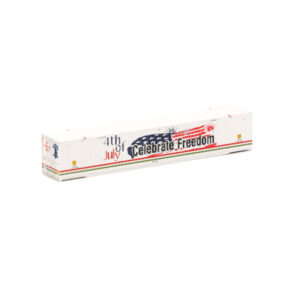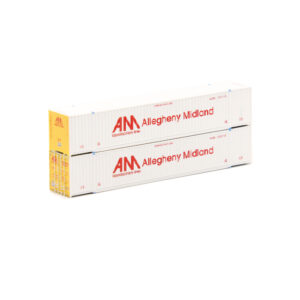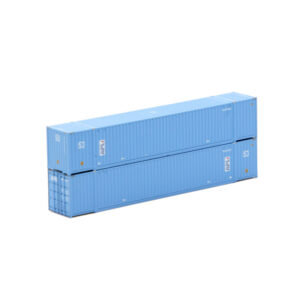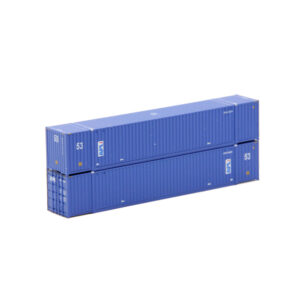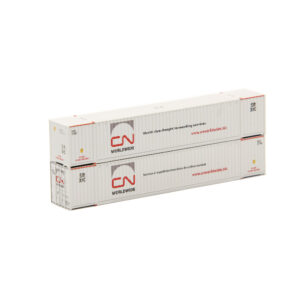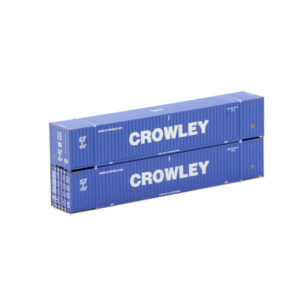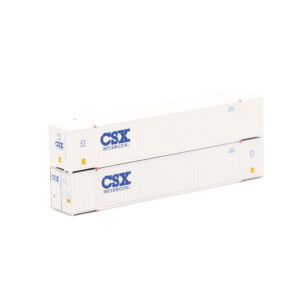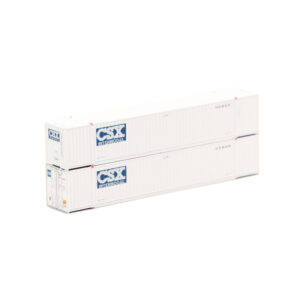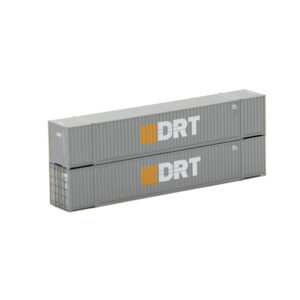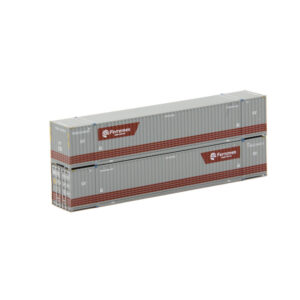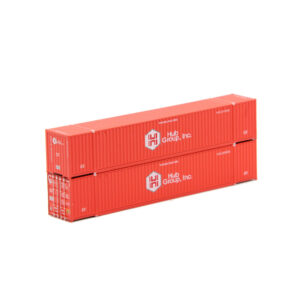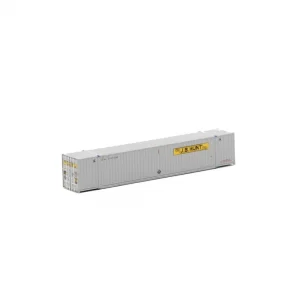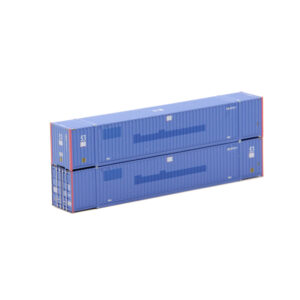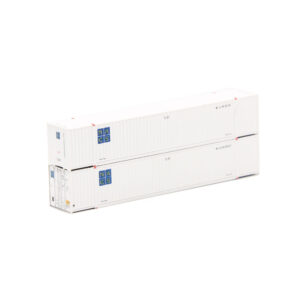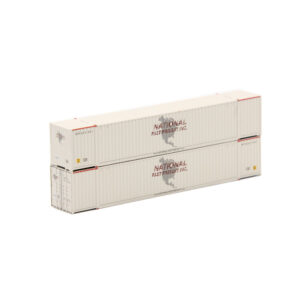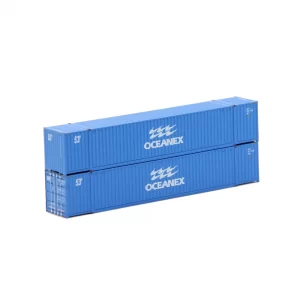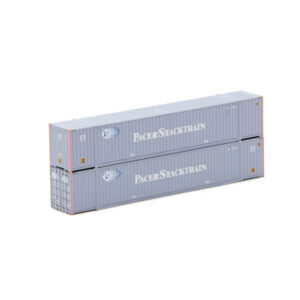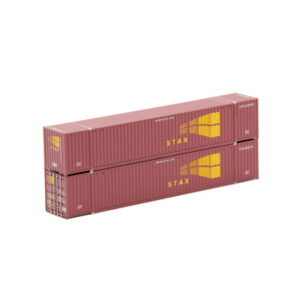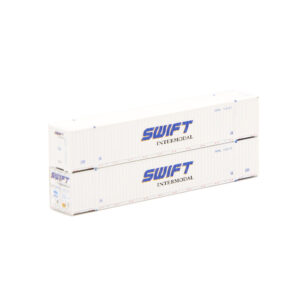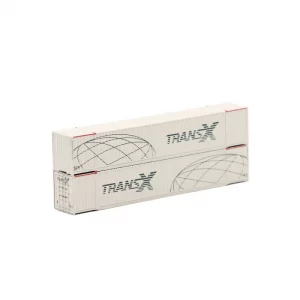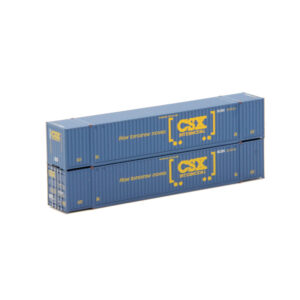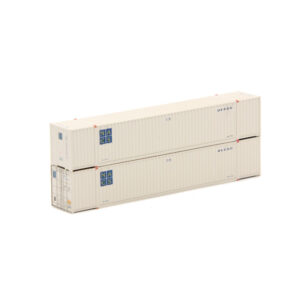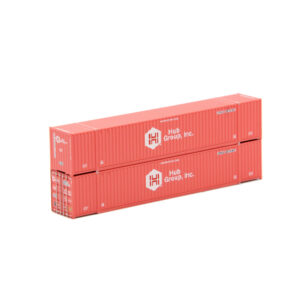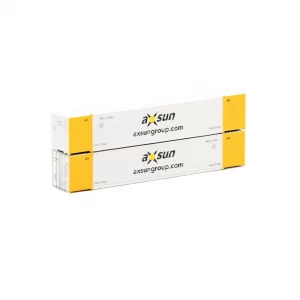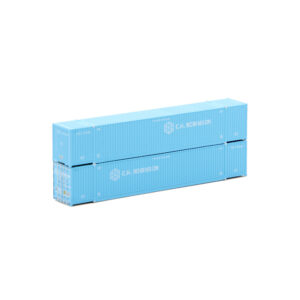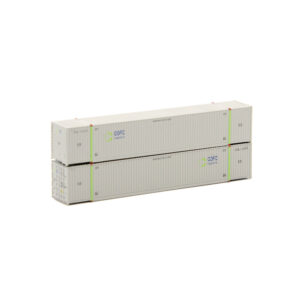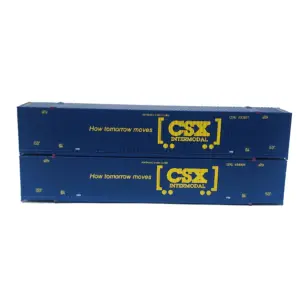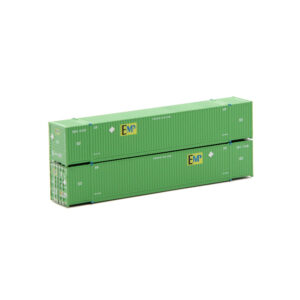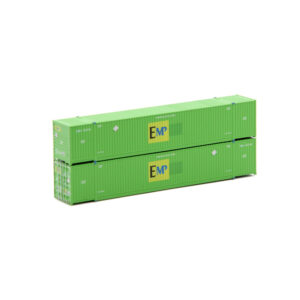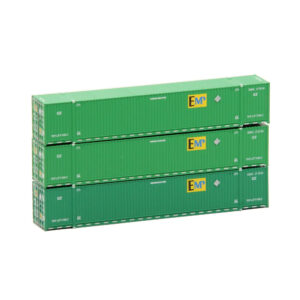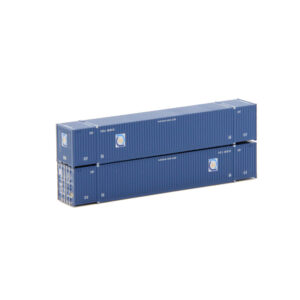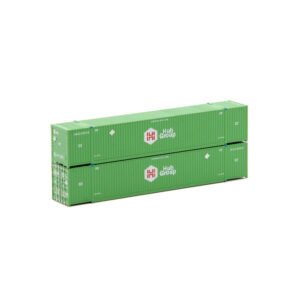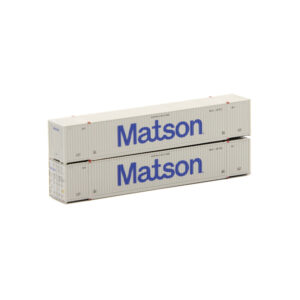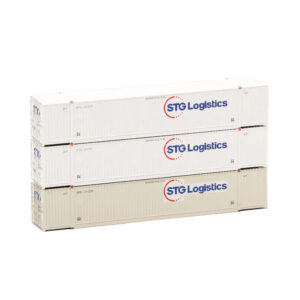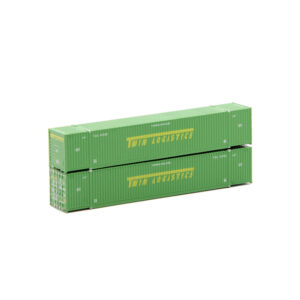53' High Cube Container
Prototype Information
The 53-foot container came out of the U.S. logistics industry’s push for more efficient domestic freight movement. In the 1980s, trucking companies began using 48-foot containers to carry more cargo than the standard 40-foot units. But they didn’t stop there. As consumer demand grew and companies looked for better ways to move lightweight, high-volume goods—like electronics, packaged foods, and retail merchandise—they pushed for even more space. That drive led to the creation of the 53-foot container in the late 1980s and early 1990s.
Trucking fleets quickly adopted the longer container, and railroads modified their well cars and terminals to handle it. Shippers loved the extra room, especially for domestic hauls where weight wasn’t the main constraint. The 53-footer allowed them to move more goods per trip, cut down on the number of containers needed, and lower overall transport costs.
Unlike 20- or 40-foot containers, the 53-foot version doesn’t see much action at sea. It’s too long to fit standard ISO container specs, which makes it impractical for stacking on ships. Instead, it thrives on land—especially in North American rail and trucking networks, where it dominates domestic intermodal freight.
Today, the 53-foot container plays a central role in U.S. logistics. It powers the movement of goods for retailers, manufacturers, and e-commerce giants, helping supply chains stay fast, flexible, and cost-effective across the continent.
Showing 1–36 of 46 results
-

Jacksonville Terminal N 53′ 6-42-6 Corrugated Container 4th of July
$18.00 Add to cart -

Jacksonville Terminal N 53′ 6-42-6 Corrugated Container Allegheny Midland
$27.00 Select options This product has multiple variants. The options may be chosen on the product page -

Jacksonville Terminal N 53′ 6-42-6 Corrugated Container APL “Vertical Logo, Faded”
$27.00 Select options This product has multiple variants. The options may be chosen on the product page -

Jacksonville Terminal N 53′ 6-42-6 Corrugated Container APL “Vertical Logo”
$27.00 Select options This product has multiple variants. The options may be chosen on the product page -

Jacksonville Terminal N 53′ 6-42-6 Corrugated Container Canadian National “Worldwide Logo”
$27.00 Select options This product has multiple variants. The options may be chosen on the product page -

Jacksonville Terminal N 53′ 6-42-6 Corrugated Container COFC Logistics “ex Pacer Stacktrain”
$27.00 Select options This product has multiple variants. The options may be chosen on the product page -

Jacksonville Terminal N 53′ 6-42-6 Corrugated Container Crowley
$27.00 Select options This product has multiple variants. The options may be chosen on the product page -

Jacksonville Terminal N 53′ 6-42-6 Corrugated Container CSX
$27.00 Select options This product has multiple variants. The options may be chosen on the product page -

Jacksonville Terminal N 53′ 6-42-6 Corrugated Container CSX “Blue Box White Lettering”
$27.00 Select options This product has multiple variants. The options may be chosen on the product page -

Jacksonville Terminal N 53′ 6-42-6 Corrugated Container DRT Transportation
$27.00 Select options This product has multiple variants. The options may be chosen on the product page -

Jacksonville Terminal N 53′ 6-42-6 Corrugated Container Ferromex
$27.00 Select options This product has multiple variants. The options may be chosen on the product page -

Jacksonville Terminal N 53′ 6-42-6 Corrugated Container Hub Group “Red”
$27.00 Select options This product has multiple variants. The options may be chosen on the product page -

Jacksonville Terminal N 53′ 6-42-6 Corrugated Container JB Hunt “Gray, Ocean Service”
$18.00 Select options This product has multiple variants. The options may be chosen on the product page -

Jacksonville Terminal N 53′ 6-42-6 Corrugated Container Milestone “ex Pacer Stacktrain”
$27.00 Select options This product has multiple variants. The options may be chosen on the product page -

Jacksonville Terminal N 53′ 6-42-6 Corrugated Container NACS
$27.00 Select options This product has multiple variants. The options may be chosen on the product page -

Jacksonville Terminal N 53′ 6-42-6 Corrugated Container National Fast Freight
$27.00 Select options This product has multiple variants. The options may be chosen on the product page -

Jacksonville Terminal N 53′ 6-42-6 Corrugated Container Oceanex
$27.00 Select options This product has multiple variants. The options may be chosen on the product page -

Jacksonville Terminal N 53′ 6-42-6 Corrugated Container Pacer Stacktrain “Faded”
$27.00 Select options This product has multiple variants. The options may be chosen on the product page -

Jacksonville Terminal N 53′ 6-42-6 Corrugated Container Stax
$27.00 Select options This product has multiple variants. The options may be chosen on the product page -

Jacksonville Terminal N 53′ 6-42-6 Corrugated Container Swift “Intermodal”
$27.00 Select options This product has multiple variants. The options may be chosen on the product page -

Jacksonville Terminal N 53′ 6-42-6 Corrugated Container TransX “Globe”
$27.00 Select options This product has multiple variants. The options may be chosen on the product page -

Jacksonville Terminal N 53′ 6-42-6 Corrugated Container UMAX “ex CSX Boxcar Logo”
$27.00 Select options This product has multiple variants. The options may be chosen on the product page -

Jacksonville Terminal N 53′ 6-42-6 Corrugated Container UMAX “ex NACS”
$27.00 Select options This product has multiple variants. The options may be chosen on the product page -

Jacksonville Terminal N 53′ 6-42-6 Corrugated Container Union Pacific “ex Hub Group”
$27.00 Select options This product has multiple variants. The options may be chosen on the product page -

Jacksonville Terminal N 53′ 8-55-8 Corrugated Container Axsun
$27.00 Select options This product has multiple variants. The options may be chosen on the product page -

Jacksonville Terminal N 53′ 8-55-8 Corrugated Container CH Robinson
$27.00 Select options This product has multiple variants. The options may be chosen on the product page -

Jacksonville Terminal N 53′ 8-55-8 Corrugated Container COFC Logistics
$27.00 Select options This product has multiple variants. The options may be chosen on the product page -

Jacksonville Terminal N 53′ 8-55-8 Corrugated Container CSX “Boxcar”
$27.00 Select options This product has multiple variants. The options may be chosen on the product page -

Jacksonville Terminal N 53′ 8-55-8 Corrugated Container EMP
$27.00 Select options This product has multiple variants. The options may be chosen on the product page -

Jacksonville Terminal N 53′ 8-55-8 Corrugated Container EMP “ex Hub Group”
$27.00 Select options This product has multiple variants. The options may be chosen on the product page -

Jacksonville Terminal N 53′ 8-55-8 Corrugated Container EMP 3 Pack
$39.00 Select options This product has multiple variants. The options may be chosen on the product page -

Jacksonville Terminal N 53′ 8-55-8 Corrugated Container Florida East Coast
$27.00 Select options This product has multiple variants. The options may be chosen on the product page -

Jacksonville Terminal N 53′ 8-55-8 Corrugated Container Hub Group “Green”
$27.00 Select options This product has multiple variants. The options may be chosen on the product page -

Jacksonville Terminal N 53′ 8-55-8 Corrugated Container MATSON
$27.00 Select options This product has multiple variants. The options may be chosen on the product page -

Jacksonville Terminal N 53′ 8-55-8 Corrugated Container STG Logistics
$39.00 Select options This product has multiple variants. The options may be chosen on the product page -

Jacksonville Terminal N 53′ 8-55-8 Corrugated Container Twin Logistics
$27.00 Select options This product has multiple variants. The options may be chosen on the product page


